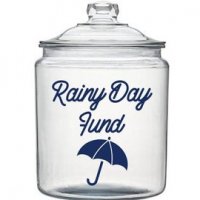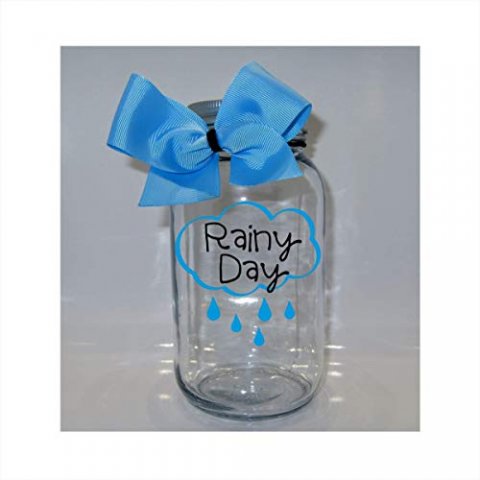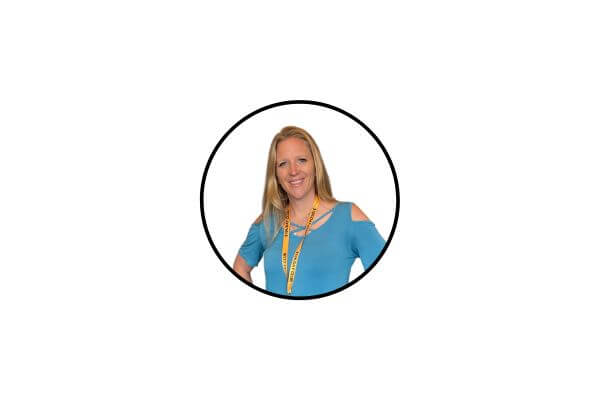Breaking Down the Purpose of a Rainy Day Fund
This post may contain affiliate links, which helps us to continue providing relevant content and we receive a small commission at no cost to you. As an Amazon Associate, I earn from qualifying purchases. Please read the full disclosure here.
Job loss. Medical diagnosis. Cross country move. Natural disaster.
These are big unexpected life events that rock your world and can wreak havoc on your personal finances if you are not prepared.
These are big life events – much bigger than simple and smaller events.
That is where a rainy day fund or money set aside in a big expense fund comes into play.
A rainy day fund can weather you from the storm. It is the rainbow at the end of dark and tumultuous times.
There is a lot of confusion between an emergency fund and a rain day fund. We take the gray out and tell you the difference.
A rainy day or big expense fund is another stepping stone to building a strong foundation. One that is important to reach financial freedom.
In fact, a rainy day fund is step #5 of the 10 Steps to Financial Freedom.
Building a strong foundation is critical for long term success with money. Make sure you are on track today!
In this post, we will uncover everything you need to know about rainy day or big expense funds and how to best utilize them in your financial toolkit.
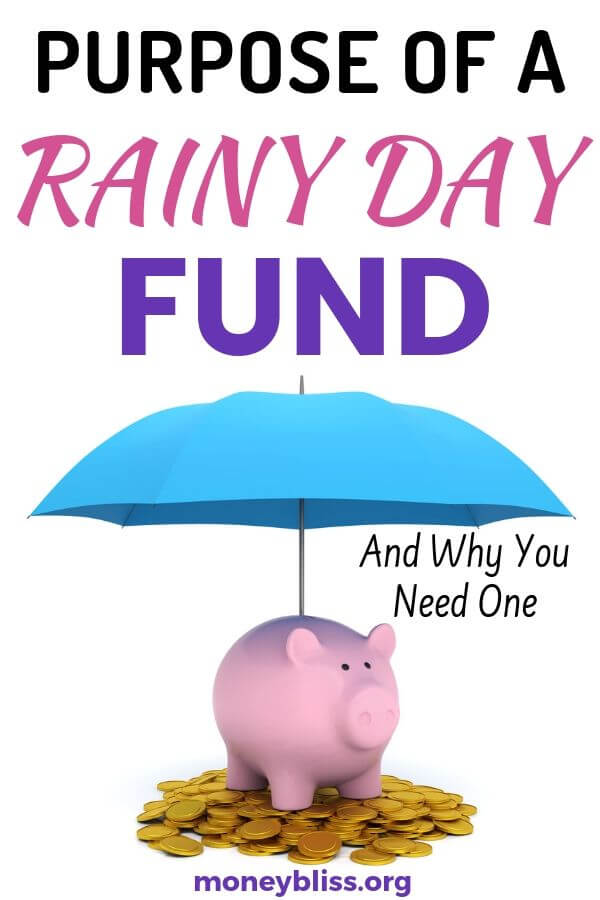
What is a Rainy Day Fund?
With a rainy day fund, money is set aside for use when regular income is disrupted or decreased in order to keep paying your bills and expenses. This big expense fund will keep you afloat during the crisis.
A rainy day fund is a large sum money available to cover any number of expenses over a long period of time.
Typically, most people set aside enough money to cover 3-6 months of expenses.
As we will discuss shortly, a rainy day fund is different than an emergency fund.
The purpose of a rainy day or big expense fund is to help you weather a difficult financial time, stay away from debt, and no need crowd source money to cover your basic expenses.
Rainy Day Fund vs. Emergency Fund
Most personal finance bloggers blur the lines and say they are the same thing. But, they are NOT THE SAME THING.
For long term success with money, it is about building a strong foundation to stand firmly upon. That is why the Money Bliss Steps to Financial Freedom are so important in building your foundation with money.
Let’s dig into the definitions of each:
Emergency Fund – money to cover a short term unexpected expense
Rainy Day Fund – money to cover many expenses over a longer period of time
As you can each serves a completely different purpose, therefore, it is key to have two separate sinking funds for each of them.
The recommended amount for an emergency fund is 2% of income with a minimum and maximum range of $1,000-5,000 set aside for emergencies. And truth be told, never to be used, but there in case you need it. Learn everything you need to know about emergency funds.
On the flip side, a rainy day fund is a much larger fund. Typically, the size of a rainy day or big expense fund can be from $10,000-50,000.
Also, funding each comes at different times in your personal finance journey. The emergency fund is the most crucial and comes right after organize personal finances. Then, a rainy day or big expense fund comes a little later down the line after all debt is paid off.
Related reading: Emergency Fund – Everything You Need to Know
How Much to Save for Rainy Day Fund
Obviously, a rainy day fund is a rather large sum of money. It will take time and patience to build it up.
The goal of a rainy day fund is to cover your expenses on a long term basis. Typically, a minimum of 3 months of expenses up to a maximum of 1 year.
Every household is different and as such the expenses vary.
Let’s look at the average household as an example:
Average income is $58,000 a year and typical expenses are 70% of income.
Then, let’s assume monthly expenses would be $3,383.
For this average household, the rainy day fund could be:
- Minimum 3 months of expenses: $10,149
- 6 months of expenses: $20,298
- Maximum 12 months of expenses: $40,596
For the average household, a rainy day fund could be from $10,000 up to a maximum of $40,000.
Then, you can ensure your ability to weather a difficult financial time in your life.
Now, it is time to figure out the size of your rainy day or big expense fund. Start with your known expenses. If you don’t know what your expenses are, then it is time to learn how to budget money .Honestly, it is very simple and worth the effort to dedicate the actively managing your money instead of money managing you.
The multiple your expense number 3. Then, 6. Finally, 12 months.
For example: your expenses X 3 = money needed to cover three months of expenses
That will give you the range of your rainy day fund to start building.
Next, we will discuss the variables to a rainy day or big expense fund to make sure you can decide on a number that you are comfortable with.
Variables to Size of Big Expense Fund
There are many variables to consider when deciding the right size for your rainy day fund.
The first are your source of income while the last deals with your comfort level.
Stability of Income
If you are a salaried employee, this section is for you.
The more stable your stream of income, the less reliance and pressure for a larger sum in the rainy day or big expense fund.
Once you become a veteran employee, typically your chances for a disruption in continuous income is minimal (unless the company is being bought out or some other event is looming).
That stability in income means you can probably stay at the minimum amount or 3 months of expenses with your rainy day fund.
Irregular Income
If you are an hourly employee, on commission, or self employed, this section is for you.
With irregular income, you have highs and lows of when you get paid and how much you get paid. The irregularity tricks you that budgeting is impossible, yet in all honesty, it is more important than for a “normal” worker.
When it comes to a rainy day fund, you must set aside a higher dollar amount. The ability to cover a longer term of expenses because your income is not guaranteed like a salaried employee.
For irregular income, look at covering expenses for 6 months or up to a year.
The Breadwinner
Weathering the storm is easier when there are multiple streams on income coming in.
If you are a one income household, then a greater reliance is placed on the fund for a rainy day.
This is an importance variable to consider when deciding how much money to set aside in this big expense fund.
Comfort Level
Everyone has a different comfort level and that is completely okay and normal.
For me, my comfort level is fine with a lower rainy day or big expense fund because of steady stream of income (very grateful and blessed with that). On the flip side, my husband wants a higher big expense fund since we have been a single income family for so many years.
Your past experiences will help gauge your comfort level.
This is your money journey. You need to do what makes your comfortable and sleep at night.
Sit down and figure out how these variables impact your decision on the size of fund for a rainy day is sufficient for your household.
How to Build a Rainy Day Fund
First, before you jump into and start building your fund for a rainy day. Make sure you have crossed off the first 4 steps on your journey towards financial freedom. As we discussed above, a rainy day or big expense fund is not the same thing as an emergency fund.
Just to reiterate the above statement… It is crucial to have a solid emergency fund and debt paid off before building your rainy day or big expense fund.
1. How Much for Big Expense Fund
The first step is to determine how much money you need to set aside for a rainy day fund. You must determine how much money is needed in your big expense fund is to cover your expenses on a long term basis. Typically, a minimum of 3 months of expenses up to a maximum of 1 year.
If you don’t know your monthly expenses, then start with how to make a budget. That post details everything you need to know on successfully making a budget.
Once you know your expenses, figure out the number of months you want to cover in your rainy day fund. There are many variables to consider with this. So, please reference the above part of this part as a review.
2. Make Savings a Priority
One of the hardest things about being smart with money is actually saving money and not touching it.
We know that savings is important – whether for an emergency expense or down payment for a house or retirement savings. But, we want to live in today and we don’t know what tomorrow holds. Believe me. I get it. It seems like the angel – demon conversations going on my shoulders (all the time).
However, I know in the end that savings must be a priority in order to reach our money goals. You must do the same thing, too.
3. Type of Account
With a rainy day fund, I HIGHLY RECOMMEND moving it to another bank than your current day-to-day banking activities. This is one I recommend the most.
Preferably save your rainy day or big expense fund in a high interest saving account. In today’s market, you want an account that is earning over 1.5% APY.
Anything amount over $10,000, then consider opening up an investment account. This is completely dependent on your comfort level. But, if the money is unlikely to be used in at least one year, it is a viable smart investment money move.
If you are shy of the possible downturn of the market, then look at CD laddering to get higher interest rates. Simply put… divide up your rainy day fund into 6 chunks of money. Then, leave one chunk in a high interest savings account that is accessible. Put the 2nd chunk in a 1 year CD, 3rd chunk in 2 year CD, 4th chunk in 3 year CD, 5th chunk in 4 year CD, and 6th chunk in 5 year CD. That way you always have some of the money available if needed.
4. Make it Automatic
Take out all of the distractions and set up all of your savings automatically. That way the temptation to spend money is gone.
You can do this a number of different ways:
- Divide up your paycheck between various accounts with your HR department.
- Set up automatic transfers with your bank.
It doesn’t matter how you do it, just take it off your To Do List and make it happen automatically.
Saving Resources:
- How to Save Money (Simple & Easy Tips)
- 12 Painless Ways to Save Money on a Tight Budget
- How to Save Money Fast – Save $1,000 in a Month
- Handpick the 52 Week Money Saving Challenge for You
5. Fully Funded Rainy Day Fund, What Next?
The best is when you fully fund your rainy day fund. That is a huge accomplishment and needs to be celebrated. By saving money, you have set yourself up in a small percentage of people.
Once the rainy day or big expense fund is completely funded, then you can move forward with the Money Bliss Steps to Financial Freedom. Time to max out your retirement accounts and start daydreaming about your Bucket List Adventure.
Just like an emergency fund, you never want to touch your rainy day fund.
But, ultimately, you will need to dig into your rainy day or big expense fund for some reason. (Remember… that is why it is there!)
Once the storm passing, then figure out how much money is needed to refill your rainy day fund and start filling up the rainy day bucket again.
Rainy Day Fund Jar
A great way to set aside money is to throw all of your change into a rainy day fund jar.
Simple and easy way to save money and not even miss it.
Some people may call it a rainy day fund piggy bank.
Here are some ideas to get you started:
Rainy Day Fund Jars
Pick your own rainy day jar!
Rainy Day Fund Jars
Pick the perfect rainy day jar and have it customized to fit you!
DIY Glitter Money Jar Tutorial & Bonus Ideas
Learn how to make your own money jar! Who doesn't like glitter and sparkles!
Rainy Day Mason Jar Bank - Coin Slot Lid
Choose from 3 different sizes and customize it for your needs.
Rainy Day Fund App
To make things easier, there are some apps to help you save extra money along the way.
Recap – Big Expense Fund
Now, that you have learned everything you need to know about a rainy day or big expense fund. Are you ready to start saving for yours today?
It is one of the biggest ways to make sure you stand on a solid foundation with money.
Just make sure you have completed the first four steps of the Money Bliss Steps to Financial Freedom first. That way you can withstand any unexpected surprises. Plus, you will move through the steps faster when completed in order.
What size rainy day fund do you need?
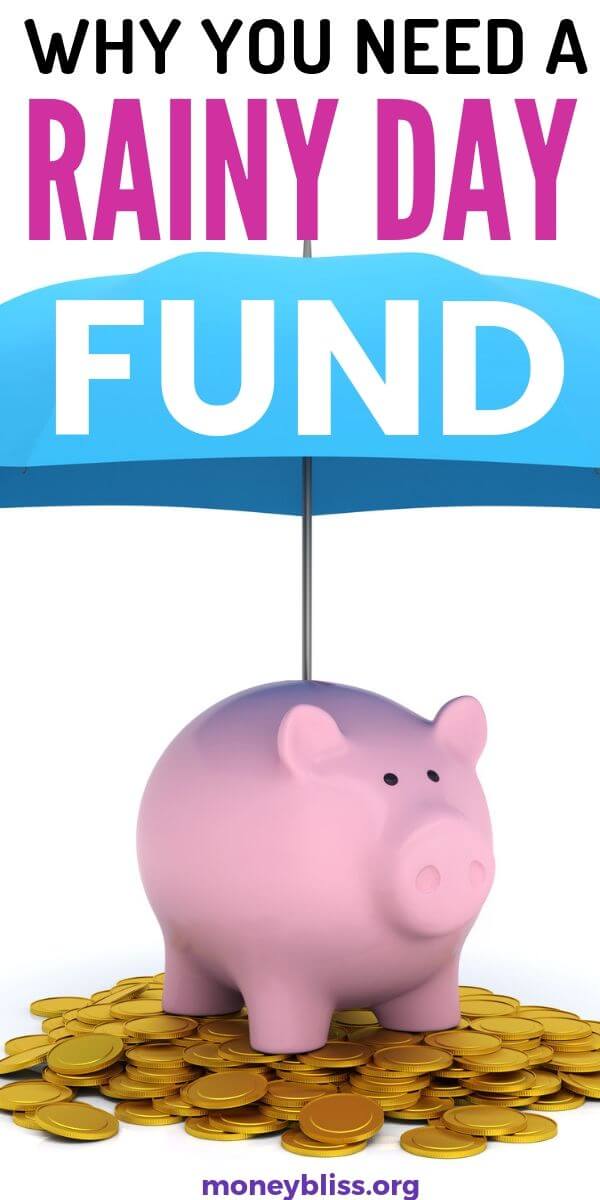
Did the post resonate with you?
More importantly, did I answer the questions you have about this topic? Let me know in the comments if I can help in some other way!
Your comments are not just welcomed; they’re an integral part of our community. Let’s continue the conversation and explore how these ideas align with your journey towards Money Bliss.

